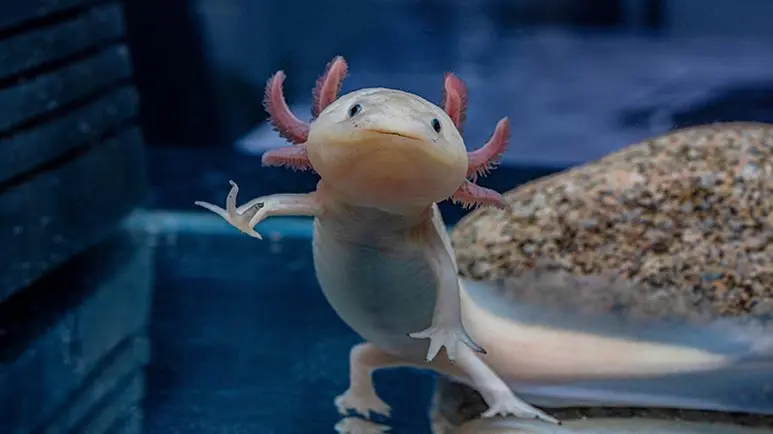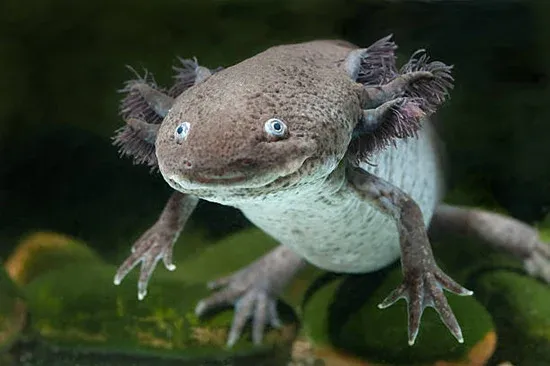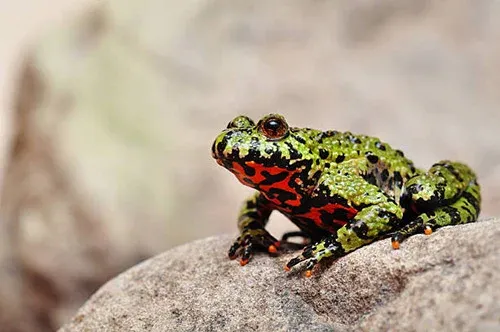Aquarium Pets Can Help Lower Your Heart Rate
If fish and birds aren't your thing, and a cat or dog doesn't fit your lifestyle, consider one (or more) of these creatures that can actually improve your health. They take up less than a few square feet of space, entertain themselves while you're away, and don't need walks.

STORY AT-A-GLANCE
- People watching an aquarium had reductions in heart rate, increases in mood, and other signs of improved well-being
- Popular non-fish aquarium pets include various types of turtles, salamanders, toads, crabs, snails, and even shrimp
- Aquarium pets do require regular attention, upkeep, and stimulation to be healthy and happy
Editor's Note: This article is a reprint. It was originally published August 29, 2015.
If you'd like to add a pet to your home but perhaps don't want quite the commitment of adding a cat, dog, or bird, an aquarium pet may be for you. Be aware, aquarium pets do require regular attention, upkeep, and stimulation to be healthy and happy, however they can be good options for people who are away from home during the day.
Aquarium pets can also be quite good for your health. For instance, people viewing a large aquarium exhibit had reductions in heart rate, increases in mood, and other signs of improved well-being.1
It's well known that exposure to natural environments have calming and stress-reducing effects in humans, and viewing an aquarium may be an extension of this. Some people are also simply drawn to the types of pets that aquariums house (personally, I love amphibians!) — and it's far more than just fish.
9 Non-Fish Aquarium Pets
Thinking of adding an aquarium to your home but looking for a pet other than fish? Check out these unique pet options compiled by Mom.me:2
- Axolotl — Axolotls are fascinating salamanders native to Mexico. They have the astounding ability to regenerate parts of their bodies, including limbs and even their brain. Axolotls require ample space to move around in, so yours will need at least a 20-gallon tank. And they're messy — so plan on cleaning the tank frequently and performing regular maintenance.

- Fire-bellied newt — Fire-bellied newts have striking orange bellies that secrete a skin-irritating toxin (this is why you should always wear gloves when handling one). The aquarium must be carefully divided to provide about 70% water and the rest sloping land area, or alternatively full water with floating cork bark for your newt to rest on.
Newts need ample stimulation and attention to habitat, such as the addition of aquatic plants, stones, and logs for climbing and hiding. - Ghost shrimp — These freshwater shrimp are often purchased as food for fish and other aquarium pets, but they make great pets in their own right. Their bodies are nearly transparent, making them interesting to look at, and they're easy to care for.
Populating your aquarium with appropriate plants will keep your ghost shrimp happy (and the family is likely to grow, as ghost shrimp easily spawn in aquariums). - Sea monkey — Sea monkeys were heavily marketed to kids over the years, but these brine shrimp actually do make great pets (albeit they don't look much like the "sea monkey" advertisements suggest). Brine shrimp eggs can be dried and remain viable for years, hatching only after you add water. The baby brine shrimps then grow to maturity in just one week.
- Freshwater snail — Snails can co-exist with other aquarium pets or be your featured inhabitant. Popular options include apple snails, mystery snails, inca snails, nerite snails, and rabbit snails. Every two to four weeks, you'll need to replace 10% to 25% of your snail's water, and be sure you have a tight-fitting lid, since snails can easily scale walls and escape.
- Red-clawed crab — These bold crabs are beautiful to look at but will pinch aggressively when handled. Their strong personalities only add to their charm, though, and they're relatively easy to care for. Red-clawed crabs need semi-salty (brackish) water in the aquarium, along with a few perches above the water line to rest. A tight lid is essential to prevent escape.
- Fire-bellied toad — Like the fire-bellied newt, the fire-bellied toad boasts a striking orange-red belly that also secretes toxins into the water. The water needs to be changed frequently to prevent build-up from harming the toad. Fire-bellied toads need a mix of land and water in the tank (about half and half) to explore.

- Freshwater crayfish — Crayfish do well living with their own kind, but with more than 100 species to choose from, you'll need to do your research to find out which habitat is best. Most can live in a 5- to 10-gallon tank, although a larger tank is necessary for multiple crayfish. While crayfish make interesting pets, they are messy eaters and tend to hide food, so plan on frequent water changes.
- Red-eared slider turtle — The red-eared slider is the most popular aquatic/semi-aquatic pet turtle. Most of the aquarium should contain fresh, frequently changed water, although this turtle also needs a basking area to warm itself (under a heat lamp).
Sources and References
- 1 Environment & Behavior July 28, 2015
- 2 Mom.me February 26, 2015











